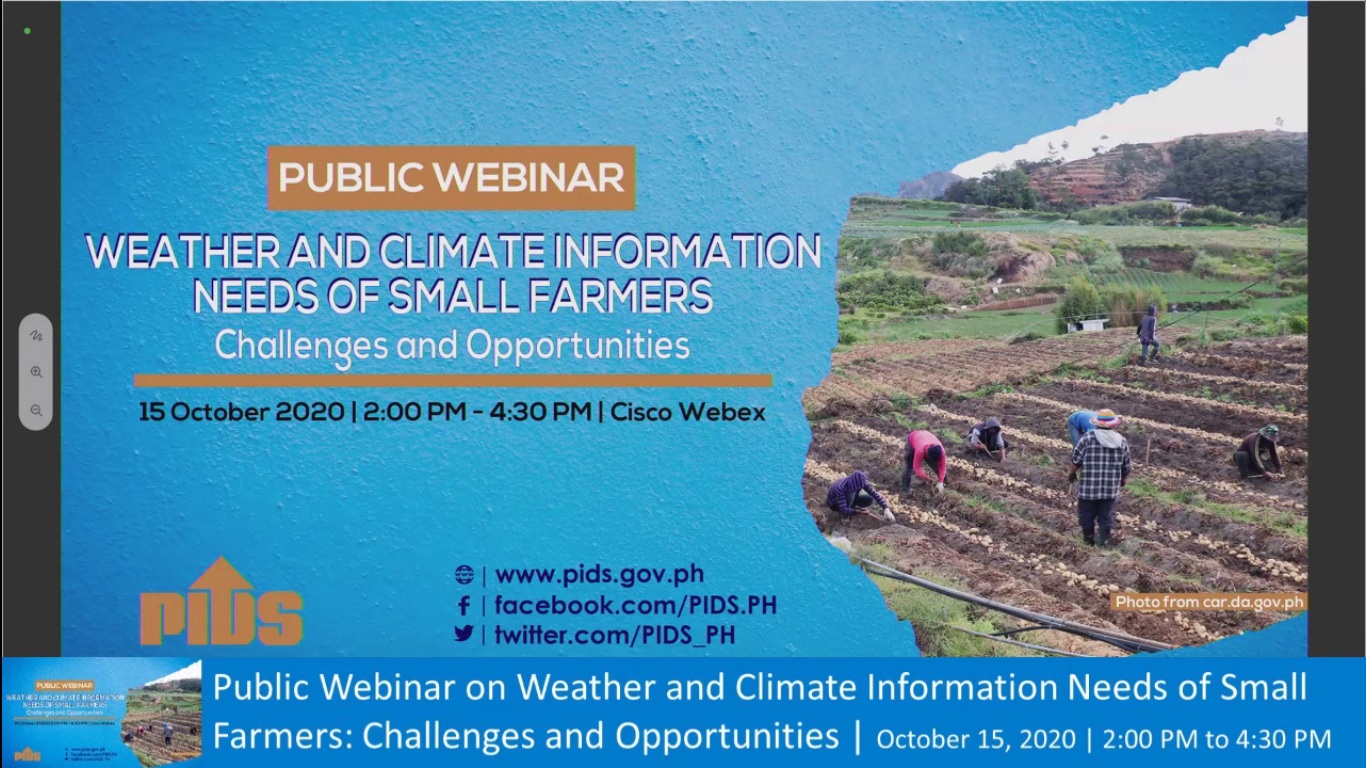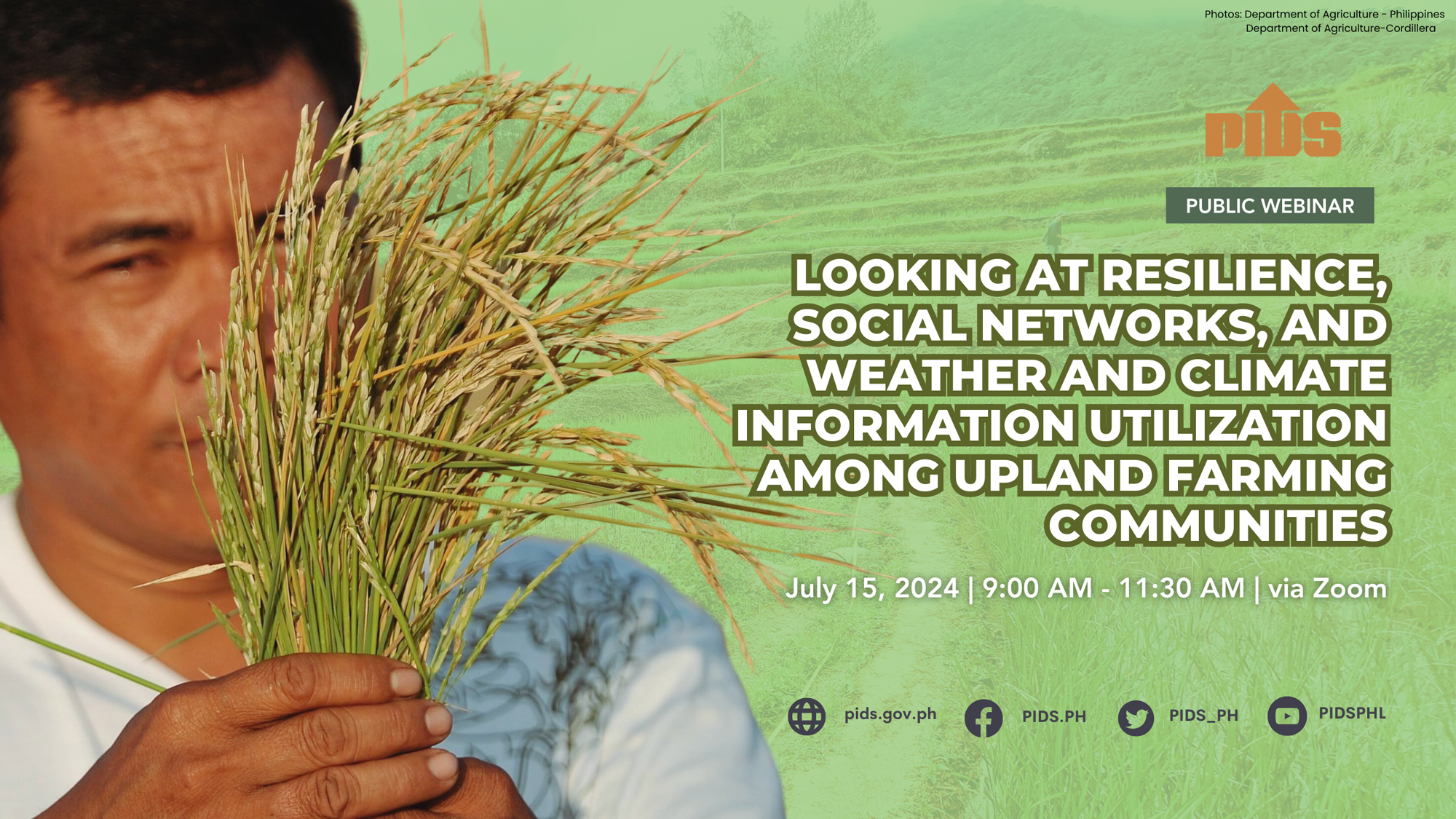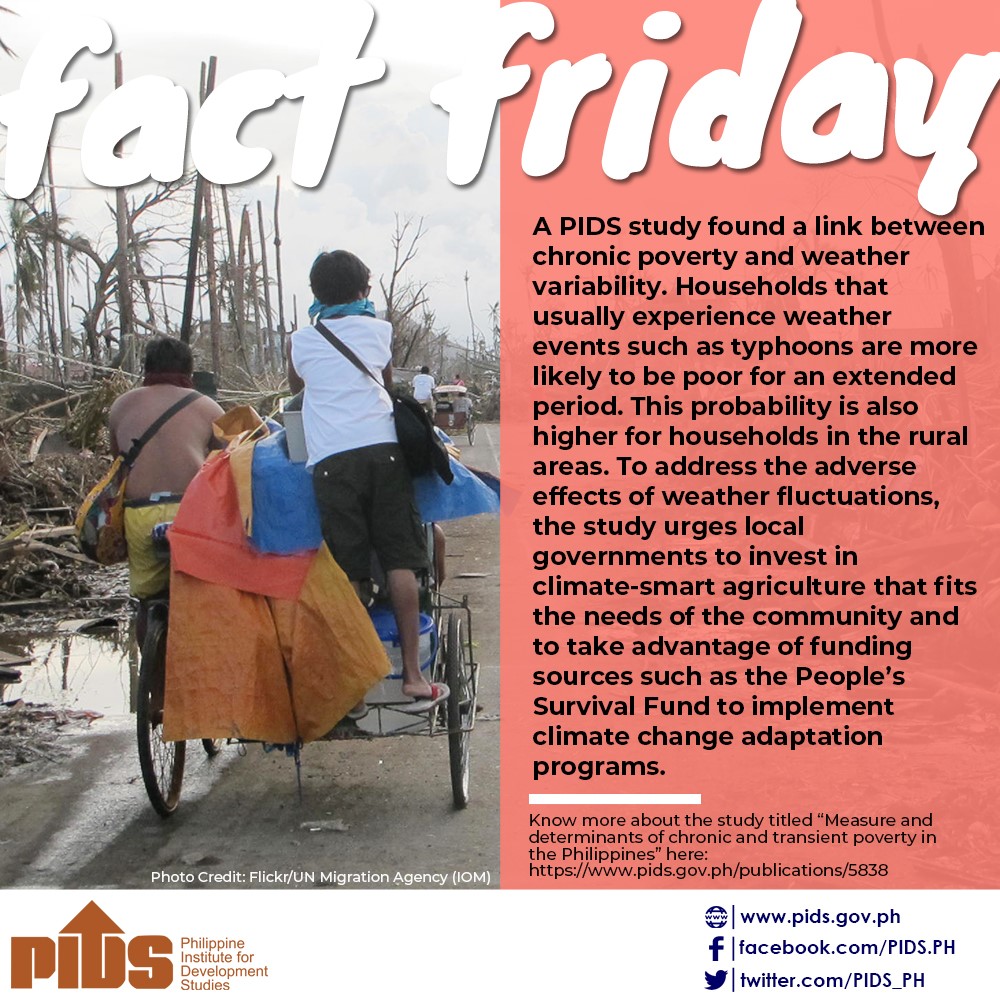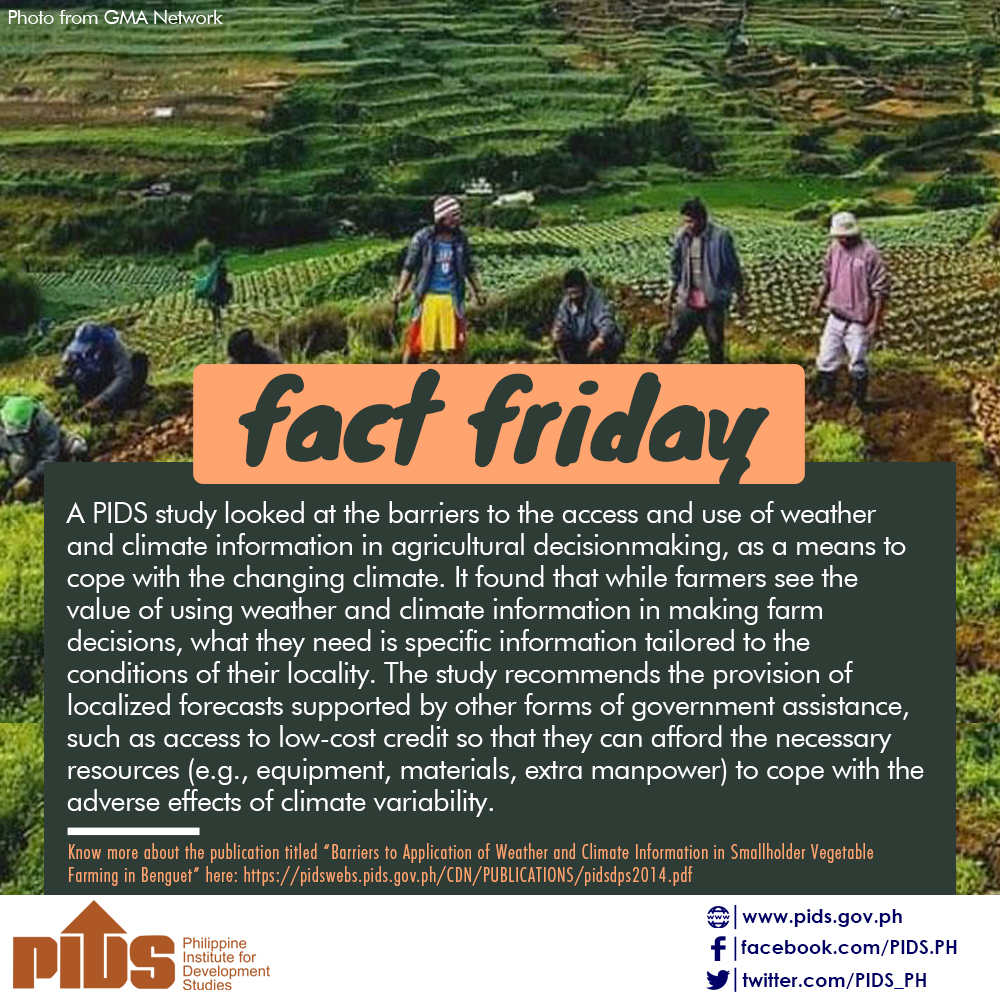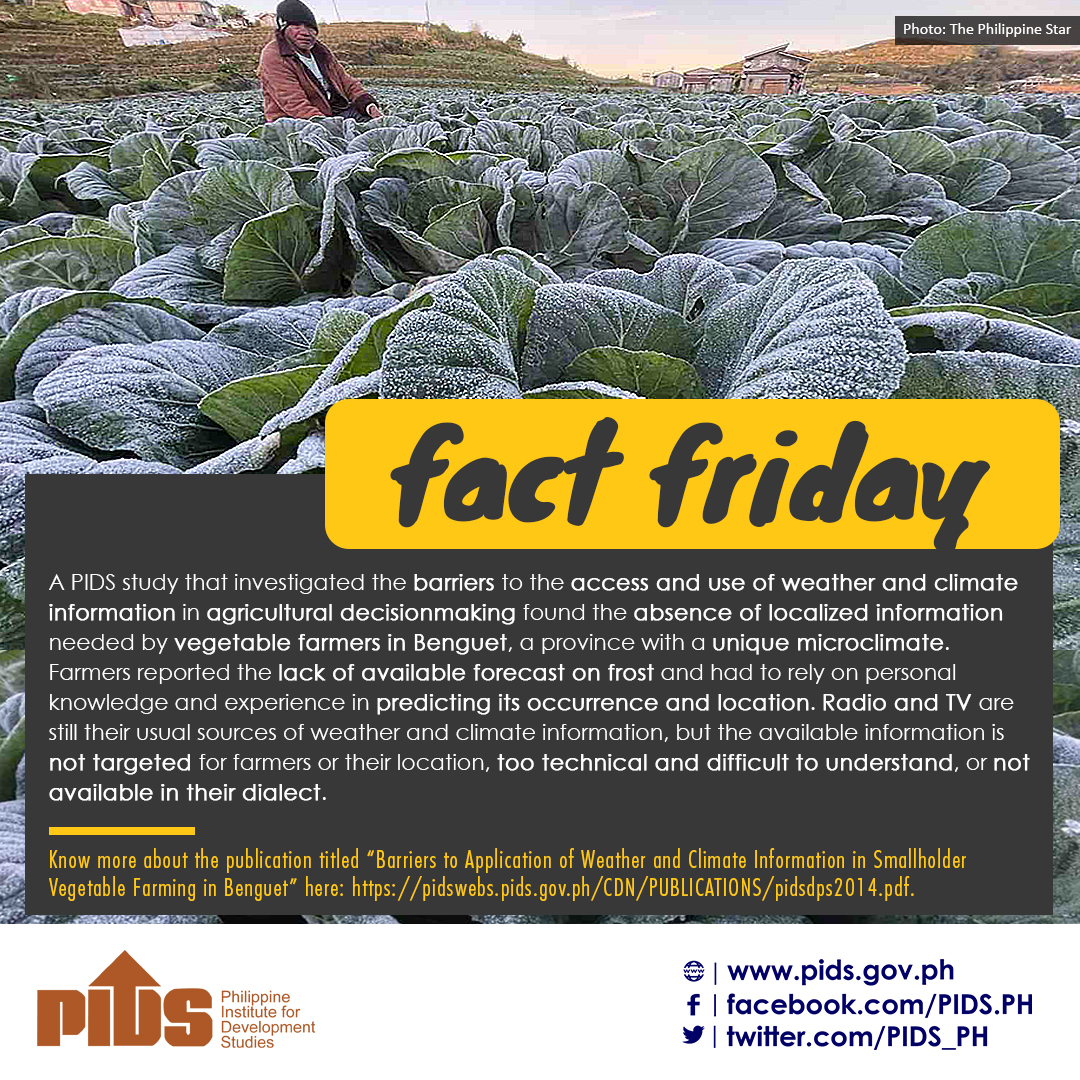THE Philippine Atmospheric, Geophysical and Astronomical Services Administration (Pagasa) must address barriers to access and utilization of its weather and climate information. Various studies conducted by the Philippine Institute for Development Studies and partner-institutions found that farmers face difficulties in using weather and climate information provided by the state weather bureau.
The lack of access to online channels, including social media and mobile applications, where the bulk of the agency’s data are available, was also identified as a gap.
Issues such as the farmers’ lack of working capital, other resources, and know-how, and the absence of tailored weather and climate forecast were reported, too.
Pagasa has areas needing improvement, especially in information dissemination to stakeholders. Perhaps it could enhance its radio-based information dissemination to improve the accessibility of its products and services. Data showed that radio is the major source of weather information among households in the province.
Another is to conduct regular information education campaigns and training for agricultural extension workers and farmers.
The state weather bureau must also establish climate field schools and develop systematic and consistent dissemination of warning protocols.
In terms of utilization, Pagasa should provide climate projections and hazard assessments that will help local government units formulate their local climate change action plans and comprehensive land use plans. It must also develop plans for climate threats and establish a communication mechanism between farmers and extension workers. Too, the importance of institutional linkages with civil society groups and international organizations to reach farmers should not be underestimated.
Yes, Pagasa must move toward impact-based forecasting, which focuses not on what the weather will be, but what the weather will do.







